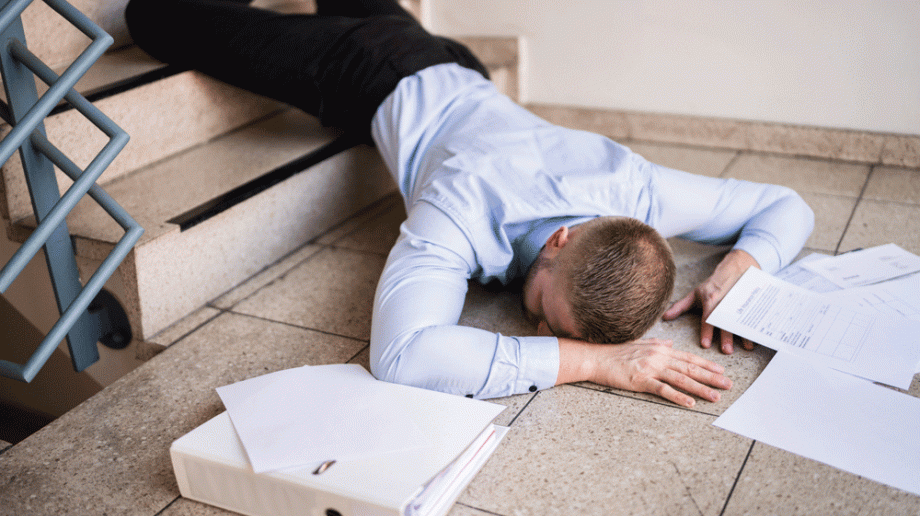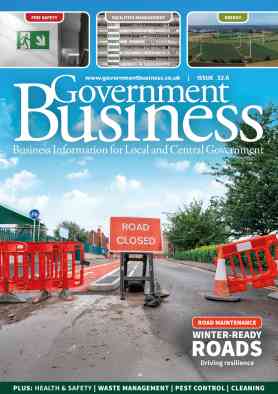
Slips and trips in the public sector
Slips and trips can be one of the most common workplace injuries across the public sector. In schools, offices, hospitals and care settings, these incidents can result in injury and disrupt operations. There are many different risk factors contributing to slips and trips and this article outlines practical strategies for prevention.
According to the Health and Safety Executive (HSE), slips and trips account for 31 per cent of non-fatal injuries to employees (across all workplaces, not just the public sector). Different settings present different risks, for example in schools, spilled drinks and cluttered corridors can pose hazards, whereas in hospitals, wet floors and hurried movement increase the danger. Offices carry risks from loose cables or uneven flooring.
The consequences can be severe. Injuries such as sprains, fractures, and head trauma can result in long-term absence and reduced productivity as well as compensation claims. For public sector organisations, this could also mean reputational damage and increased scrutiny from regulatory bodies.
Public sector organisations have a legal duty to protect employees and visitors under the Health and Safety at Work Act 1974. Failure to manage slip and trip risks can result in enforcement action, fines, and reputational damage. The Management of Health and Safety at Work Regulations also require employers to carry out suitable and sufficient risk assessments. The Workplace (Health, Safety and Welfare) Regulations 1992 require floors to be suitable, in good condition and free from obstructions.
Risk factors
In order to prevent slips and trips, we first need to understand the causes. These typically fall into three categories. Firstly, environmental hazards: wet or uneven surfaces, poor lighting, obstructed walkways, and inadequate signage are common contributors.
Secondly comes organisational shortfalls, for example a lack of routine maintenance, unclear safety procedures, and insufficient staff training.
The final factor we generally have less control over and that’s human behaviour, things like rushing, distraction, inappropriate footwear, and failure to report hazards can all increase the likelihood of incidents.
Furthermore, each setting presents its own unique challenges. For example, care homes must consider the mobility limitations of residents, while schools must manage unpredictable student behaviour and frequent spills.
Prevention
There are a few simple and effective ways to prevent slips and trips.
Routine maintenance is imperative in slip and trip prevention. This includes conducting regular inspections to identify hazards such as loose flooring or water leaks, implementing thorough cleaning protocols, especially in high-traffic areas; and choosing appropriate flooring materials that offer slip resistance in key zones.
Organisations need to be proactive in spotting and addressing hazards. This includes performing risk assessments tailored to specific environments and activities; establishing clear reporting systems that allow staff to flag concerns quickly and using visible signage and temporary barriers to warn of wet floors or ongoing maintenance.
Preventing slips and trips is not a one-off task. Organisations should regularly review incident data, audit safety practices, and seek feedback from staff.
People are the key part of any safety strategy. Ensuring that staff are informed about safety hazards and engaged is critical. This could involve providing comprehensive induction training that covers slip and trip risks; offering regular refresher sessions and practical guidance and promoting a culture of safety where staff feel empowered to act and speak up.
Leadership plays a vital role in setting expectations and modelling safe behaviour. When senior staff consistently demonstrate a commitment to safety, by following procedures, addressing hazards promptly, and encouraging open communication, they help embed safety into the culture of the organisation. Their actions signal to employees that safety is not just a box-ticking exercise but a shared responsibility. Effective leaders also ensure that safety policies are well understood, regularly reviewed, and supported with the necessary resources, creating an environment where staff feel confident to raise concerns and take proactive steps to prevent incidents.
Design choices made during refurbishment or new builds can increase or decrease slip and trip risks. For example, selecting flooring with appropriate grip ratings, ensuring adequate lighting, and planning for clear walkways can all reduce hazards. Procurement teams should consider safety performance when sourcing cleaning products, or furniture or the like.
Conclusion
Slips and trips may appear minor, but their impact can be significant. In the public sector, where duty of care is paramount, preventing these incidents is a necessity. By investing in effective maintenance, encouraging hazard awareness, and equipping staff with the right training, organisations can create safer environments for everyone.


